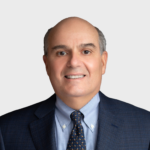
Featured Doctor
Richard D'Agostino, MD
Dr. D’Agostino is a board-certified orthopedic surgeon at Orthopaedic Associates of Manhasset specializing in sports medicine. He has dedicated his practice to the care and treatment of athletes of all ages and levels. Please call his office at (516) 627-8717 to schedule an appointment or schedule an appointment online.
View Profile

By Richard D’Agostino, MD
As a practicing sports medicine surgeon for over 30 years, I have seen the field evolve over time.
There has been a massive shift when it comes to appropriate treatments for sports injuries. In the past, surgery was usually only recommended for people who were in their 20s, 30s or 40s. Now, this has been widely expanded to fit the changing population.
The reason is two-fold. There are more children playing organized sports for longer periods of time than ever before. Specifically, this has led to a rise in ACL injuries in young children. One way to reduce the risk of ACL tears is for children to switch up sports throughout the year instead of specializing in just one, especially at a young age. There also needs to be downtime – recovery is an important part of sports that sometimes gets overlooked.
On the flip side of the coin, there are also more ACL reconstructions being done on people who used to fall into the “non-operative” category. Twenty years ago, a 55-year-old with an ACL tear would likely be treated non-surgically. Now, baby boomers are asking for surgical treatments to get back to their active lifestyle whether it is running triathlons, skiing or playing tennis.
The goal of sports medicine is to return the athlete to their pre-injury level of performance. This involves working closely with rehabilitation specialists and nutritionists to design a well-rounded care plan tailored to each athlete’s goals.
There have been numerous new surgical techniques and medical innovations over the years. In sports medicine, almost everything surgically can now be done arthroscopically. Only in very rare situations is open surgery required. Minimally invasive procedures have many benefits for patients including smaller incisions mean fewer stitches, less potential for trauma, lower infection risk and faster recovery.
Biologics remains a hot topic – one way this is being explored in sports medicine is for meniscus tears. Sometimes younger people lose a significant amount of meniscus or a repair isn’t successful. Scientists are testing scaffolding, allowing them to 3D print a meniscus and grow the patient’s own stem cells directly on that meniscus. Further clinical trials and research will determine the effectiveness of this cell therapy.
It is important to remember that just because something is new does not mean it is better. Sometimes, if techniques have been around for a while, it is because they are the most successful.
A good example is a technique I do frequently, which is a cartilage transplant procedure called Matrix-Induced Autologous Chondrocyte Implantation (MACI). Essentially, we take healthy cartilage from a patient’s knee, grow it in a lab and re-insert it into a defective portion of the knee. This creates new healthy cartilage. Ironically, this procedure was developed in the 1990s, then became popular again during this decade.
The best surgeons utilize techniques that are the most successful. Never underestimate the value of your surgeon’s skill set and experience.




